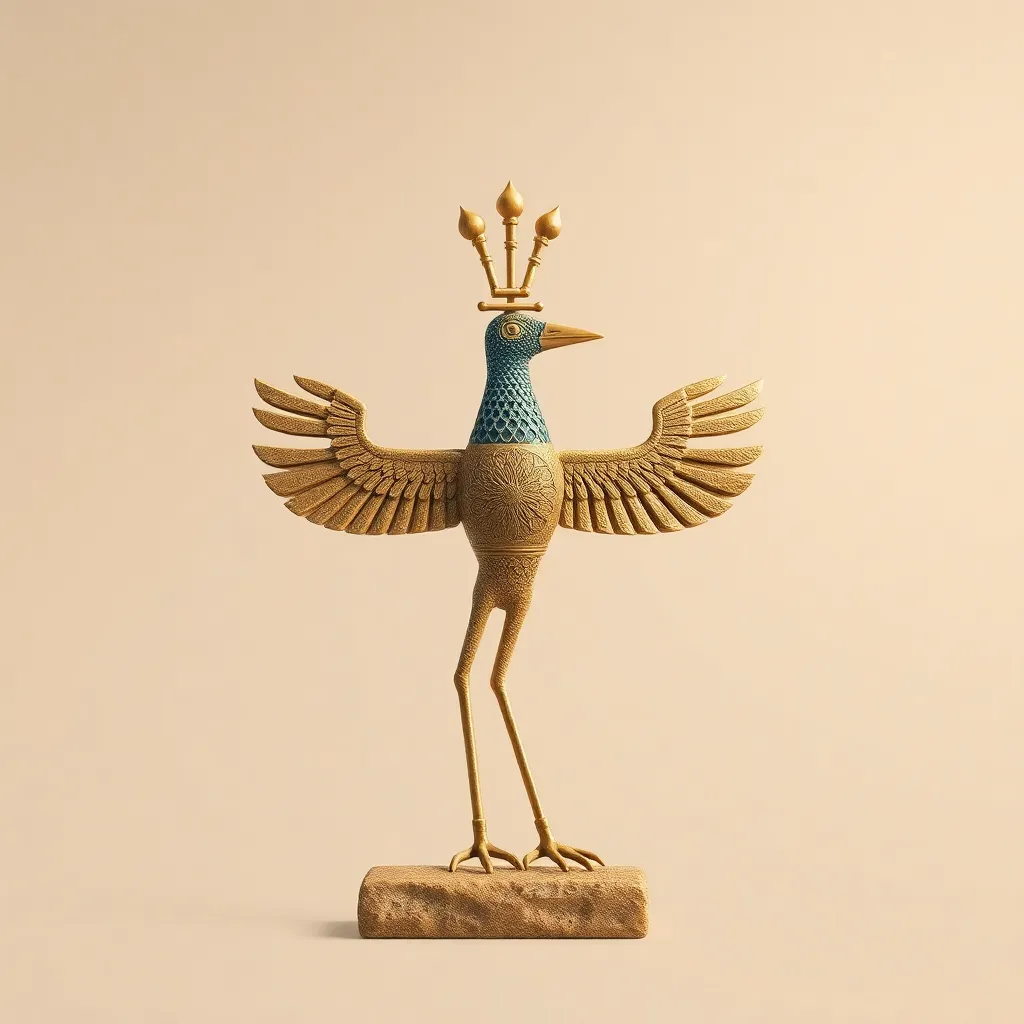The Bennu Bird: A Mythical Symbol of Divine Power
I. Introduction
The Bennu Bird, a significant figure in ancient Egyptian mythology, embodies the principles of divine power and renewal. Often associated with the sun and rebirth, it serves as a powerful symbol within the rich tapestry of Egyptian religious beliefs. This article aims to explore the historical context, characteristics, symbolism, and enduring legacy of the Bennu Bird, shedding light on its importance in both ancient and modern cultures.
II. Historical Context of the Bennu Bird
The origins of the Bennu Bird can be traced back to the ancient Egyptians, where it was regarded as a manifestation of the sun god Ra. The Bennu was believed to rise from the ashes of its predecessor, embodying the cycle of life, death, and rebirth. It was often depicted as a heron or a crane, symbolizing the emergence of life from the waters of creation.
As the myth evolved, the Bennu Bird began to be associated with other cultures, including the Greek and Roman traditions, where it was likened to the Phoenix. This cross-cultural connection highlights the universality of themes surrounding renewal and transformation.
III. Characteristics and Symbolism of the Bennu Bird
The Bennu Bird is often described in various ancient texts and artistic representations. It is typically depicted with striking plumage, a long neck, and a prominent beak. In many artworks, the bird is shown standing on a stone, often with the sun disk above its head.
- Physical Description:
- Long neck and legs
- Colorful feathers
- Associated with the sun disk
The symbolic meanings of the Bennu Bird are rich and varied:
- Rebirth: The Bennu symbolizes the cycle of life and the promise of resurrection.
- Immortality: Its ability to rise from its ashes represents eternal life.
- Transformation: The bird embodies the idea of change and renewal.
When compared to the Phoenix, another mythical bird associated with fire and resurrection, the Bennu stands out as a symbol of life emerging from water, emphasizing the interconnectedness of life, death, and rebirth in the Egyptian belief system.
IV. The Bennu Bird in Ancient Egyptian Religion
In ancient Egyptian religion, the Bennu Bird played a crucial role in funerary practices and beliefs surrounding the afterlife. It was believed that the Bennu helped guide the souls of the deceased to the afterlife, providing them with a safe passage and symbolizing their rebirth into a new life.
Depictions of the Bennu can be found in various temples and sacred texts, where it is often accompanied by hieroglyphs that emphasize its significance. Rituals involving the Bennu were common, as it was invoked during ceremonies that celebrated the cycle of life and death.
V. The Bennu Bird in Modern Culture
Today, the Bennu Bird continues to capture the imagination of artists, writers, and spiritual seekers. It has been represented in various forms of literature, art, and popular media, often symbolizing hope, renewal, and transformation.
- Literature: The Bennu appears in modern fantasy novels and mythological retellings.
- Art: Contemporary artists draw inspiration from the Bennu’s symbolism, creating works that reflect its themes of rebirth.
- Popular Media: Films and television shows often reference the Bennu, incorporating its characteristics into character development and narrative arcs.
Additionally, the Bennu Bird has influenced contemporary spirituality, with many individuals adopting its symbolism in personal practices and rituals, reinforcing its legacy as a powerful emblem of transformation.
VI. The Bennu Bird and Environmental Symbolism
The themes associated with the Bennu Bird extend into environmental symbolism, particularly in the realm of ecological renewal and conservation. The bird’s cycle of rebirth resonates with the concept of sustainability and the importance of caring for the Earth.
- Ecological Renewal: Just as the Bennu rises anew, so too can ecosystems regenerate.
- Metaphor for Sustainability: The Bennu serves as a reminder of the interconnectedness of all life and the necessity of sustainable practices.
- Initiatives: Various movements and organizations have adopted the Bennu as a symbol in their efforts to promote environmental stewardship.
VII. Comparative Analysis with Other Mythical Creatures
When comparing the Bennu Bird to other mythical creatures, especially the Phoenix, several similarities and differences emerge. Both birds symbolize rebirth and transformation, yet they differ in their elemental associations: the Bennu is linked to water, while the Phoenix is often associated with fire.
Other cultures also have representations of birds that symbolize divine power, such as:
- Garuda in Hindu mythology
- Simurgh in Persian mythology
- Hō-ō in Japanese culture
These creatures reflect cultural values and beliefs about the divine and the nature of existence, offering valuable lessons in resilience and renewal, which are especially relevant in today’s world.
VIII. Conclusion
In summary, the Bennu Bird holds significant importance throughout history and across cultures as a symbol of divine power, rebirth, and transformation. Its legacy continues to inspire and resonate in modern times, reminding us of the enduring nature of life and the possibilities of renewal. As we reflect on the symbolism of the Bennu Bird, we are encouraged to embrace its message of hope and resilience in our own lives.
The relevance of the Bennu in today’s world serves as a reminder of our connection to the past and the potential for renewal in our future.




